第58章 The Second Book(15)
Medicine is practised among them on a plan of separation; each physician treats a single disorder, and no more: thus the country swarms with medical practitioners, some undertaking to cure diseases of the eye, others of the head, others again of the teeth, others of the intestines, and some those which are not local.
The following is the way in which they conduct their mournings and their funerals:- On the death in any house of a man of consequence, forthwith the women of the family beplaster their heads, and sometimes even their faces, with mud; and then, leaving the body indoors, sally forth and wander through the city, with their dress fastened by a band, and their bosoms bare, beating themselves as they walk. All the female relations join them and do the same. The men too, similarly begirt, beat their breasts separately. When these ceremonies are over, the body is carried away to be embalmed.
There are a set of men in Egypt who practice the art of embalming, and make it their proper business. These persons, when a body is brought to them, show the bearers various models of corpses, made in wood, and painted so as to resemble nature. The most perfect is said to be after the manner of him whom I do not think it religious to name in connection with such a matter; the second sort is inferior to the first, and less costly; the third is the cheapest of all. All this the embalmers explain, and then ask in which way it is wished that the corpse should be prepared. The bearers tell them, and having concluded their bargain, take their departure, while the embalmers, left to themselves, proceed to their task. The mode of embalming, according to the most perfect process, is the following:- They take first a crooked piece of iron, and with it draw out the brain through the nostrils, thus getting rid of a portion, while the skull is cleared of the rest by rinsing with drugs; next they make a cut along the flank with a sharp Ethiopian stone, and take out the whole contents of the abdomen, which they then cleanse, washing it thoroughly with palm wine, and again frequently with an infusion of pounded aromatics.
After this they fill the cavity with the purest bruised myrrh, with cassia, and every other sort of spicery except frankincense, and sew up the opening. Then the body is placed in natrum for seventy days, and covered entirely over. After the expiration of that space of time, which must not be exceeded, the body is washed, and wrapped round, from head to foot, with bandages of fine linen cloth, smeared over with gum, which is used generally by the Egyptians in the place of glue, and in this state it is given back to the relations, who enclose it in a wooden case which they have had made for the purpose, shaped into the figure of a man. Then fastening the case, they place it in a sepulchral chamber, upright against the wall. Such is the most costly way of embalming the dead.
If persons wish to avoid expense, and choose the second process, the following is the method pursued:- Syringes are filled with oil made from the cedar-tree, which is then, without any incision or disembowelling, injected into the abdomen. The passage by which it might be likely to return is stopped, and the body laid in natrum the prescribed number of days. At the end of the time the cedar-oil is allowed to make its escape; and such is its power that it brings with it the whole stomach and intestines in a liquid state. The natrum meanwhile has dissolved the flesh, and so nothing is left of the dead body but the skin and the bones. It is returned in this condition to the relatives, without any further trouble being bestowed upon it.
The third method of embalming, which is practised in the case of the poorer classes, is to clear out the intestines with a clyster, and let the body lie in natrum the seventy days, after which it is at once given to those who come to fetch it away.
The wives of men of rank are not given to be embalmed immediately after death, nor indeed are any of the more beautiful and valued women. It is not till they have been dead three or four days that they are carried to the embalmers. This is done to prevent indignities from being offered them. It is said that once a case of this kind occurred: the man was detected by the information of his fellow-workman.
Whensoever any one, Egyptian or foreigner, has lost his life by falling a prey to a crocodile, or by drowning in the river, the law compels the inhabitants of the city near which the body is cast up to have it embalmed, and to bury it in one of the sacred repositories with all possible magnificence. No one may touch the corpse, not even any of the friends or relatives, but only the priests of the Nile, who prepare it for burial with their own hands- regarding it as something more than the mere body of a man- and themselves lay it in the tomb.